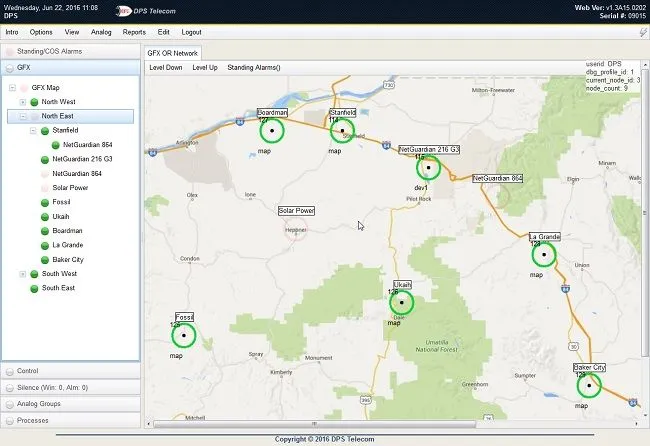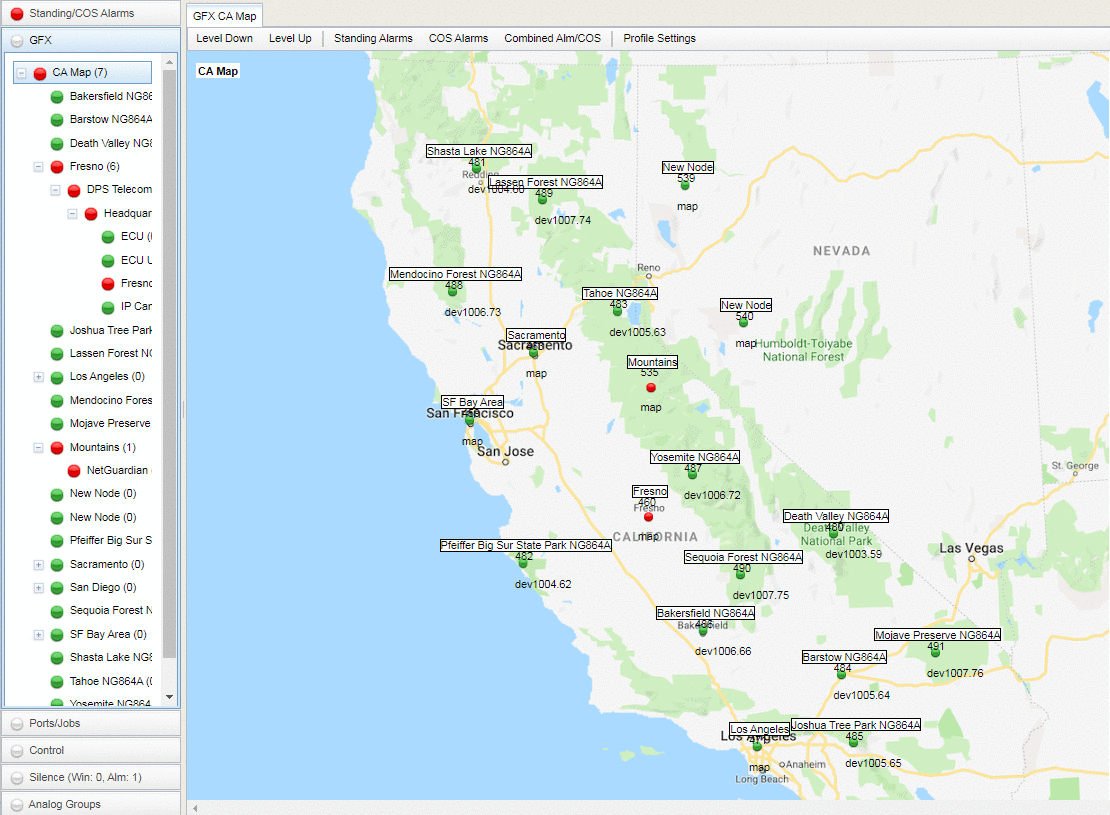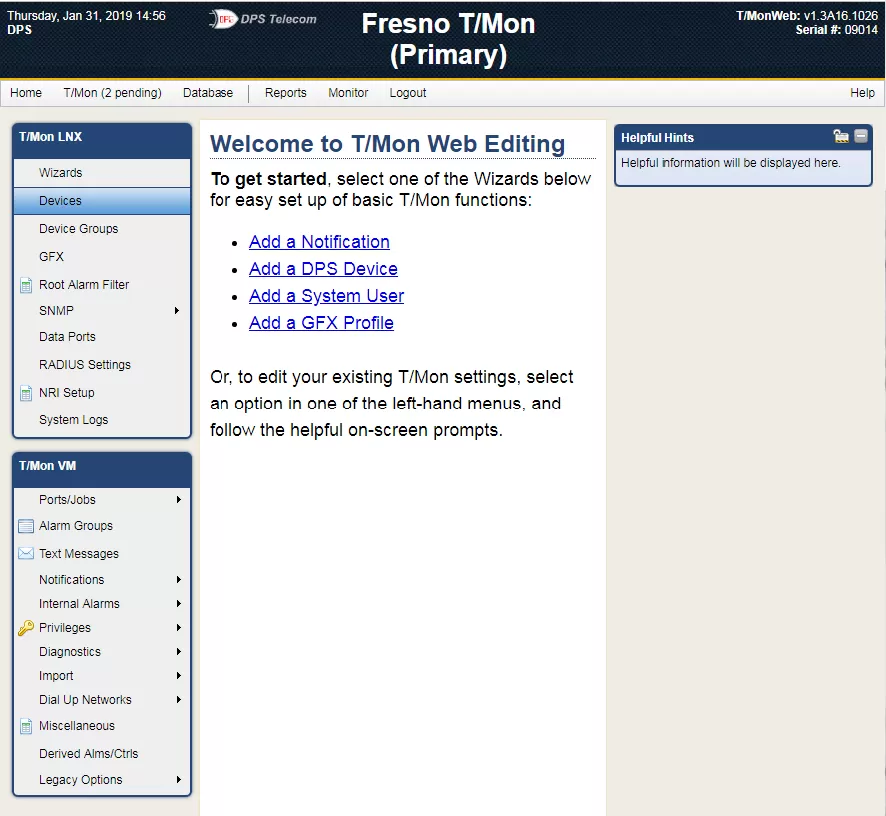How to Choose a Network Monitoring Tool
By Morgana Siggins
February 2, 2021
If you need to monitor and control a remote network, having a competent tool is critical to give you complete visibility. There are many options in the monitoring market today, so it can be challenging to choose one that will be the right one for your scenario.
In this article, we'll talk about network monitoring, what you should look for in a network monitoring device, and ultimately help you choose between the best network monitoring tools available today. So, let's dive in.

Being able to make an informed decision when selecting your network monitoring tool can directly affect your
network uptime.
Network Monitoring Basics
Network monitoring is the procedure of keeping an eye on devices and equipment - usually located at a remote location. Examples of commonly monitored gear include servers, switches, routers, generators, and propane tanks.
Often, those devices are the key to keep mission-critical networks working 24/7, so technicians need to have real-time visibility and awareness about the conditions of their equipment. With trends identified and issues correct in a timely manner, outages and other problems can be prevented.
This means that network monitoring systems are critical because they provide a way for you to efficiently and effectively improve your network performance and uptime, providing your end-users with much better service. With the right monitoring solution, you can:
- Avoid or reduce network downtime
- Gain awareness into network performance
- Remotely control devices when issues happen or even have your devices automatically respond to problems
- More efficiently use your resources
- Perform proactive maintenance
- Free up your network techs to work on other important tasks
- Achieve a measurable ROI
To be able to achieve these benefits, you need a competent network monitoring solution. It should provide you with the following key functions:
- Real-time monitoring
Continuous monitoring of equipment is the first step into having comprehensive visibility over your network. Your monitoring system should be dependable and work 24/7. - Instant alerting
Network monitoring tools should generate alerts to quickly notify your team when a problem happens. These alerts can include text messages, emails, and warnings in an interface - depending on what you configure. - Reporting and trending
Based on the data gathered by real-time monitoring throughout a period of time, your solution should be able to provide you with reports and trends. This can help you identify possible or recurring issues, allowing you to perform a more proactive monitoring approach.
How to Choose Between Monitoring Tools
Of course it's important to know what network monitoring solutions are in the market, but that doesn't mean that all of them will meet your needs. Keep in mind that there's no one-size-fits-all type of tool, so you'll need to narrow your options to ultimately choose the right one for your network.
For instance, how many and what type of devices do you need to monitor? Usually, the number of devices you have will affect the cost of a monitoring solution - higher capacity is more expensive. Other things to keep in mind are:
- Your budget
Purchasing in a network monitoring system is a serious investment. After all, this system will have to be reliable enough to protect your mission-critical network. So, it's important that you get the best tool you can afford. - Where your devices are located
Both the type of devices you need to monitor and where they are located matters. For example, if most of your network infrastructure consists of physical devices that don't support cloud, a tool that specializes in cloud monitoring may not be a good fit. - The kind of data you need to monitor
What kind of information is important for you? Do you simply want to know when your equipment is down or do you want more detailed insights as to their performance? Make sure your monitoring solution offers you the level of visibility you need. - If you are a managed service provider
Are you a managed service provider? If so, you might be aware that you have a unique set of requirements when it comes to network monitoring systems. Not only you need to track your network's performance, but also you need to have as many automated capabilities as possible in order to positively impact your business.
Now, in terms of features and capabilities, also be sure to consider the following:
- Protocols supported
The more communication protocols your network monitoring tool supports the more data points and insights you can potentially get. The need for that, of course, will depend on your network. If all you have is SNMP devices (and don't plan to add any other type of protocol) then that's probably the only one you need. - Visualization features
Having a web interface that features maps, graphs, and charts will help you visualize the layout of your network, as well as the health of your equipment, and alarms going on. - Alerting
Receiving effective alerts is critical in terms of remote monitoring. After all, you can't be in your office 24/7, so you need a reliable method to know when an issue happens so you can respond to it in a timely manner. Be sure that your monitoring solution offers threshold customization and the types of alerts you need. - Security
Does your network monitoring tool use encrypted protocols (like HTTPS and SNMPv3)? Is there a way to proactively detect and respond to potential threats? What kind of security features your tool uses to store data? The answers to these questions can make a difference to your network security. - Ease of use
Some remote monitoring systems have many different features and capabilities, but require a lot of training so you can get the most out of them. Make sure to find your tool is feature-rich but also is intuitive enough that requires little to no training. - Scalability
It's also important to take into consideration how much you expect your network to grow. When buying your monitoring tool, make sure it has capacity enough to handle all your present and future needs - within a reason.
After considering these factors, you'll be able to narrow down which network monitoring tools will be best for you. From there, it's always important to ask for a demo from the vendor.
T/Mon LNX: One of The Best Network Monitoring Tools
The T/Mon LNX is one of the most popular network monitoring tools available today, and for a good reason. T/Mon offers a wide variety of advanced monitoring, remote control, analysis, and reporting features along with an intuitive web interface.

The T/Mon features the
GFX. GFX is a user-friendly graphical interface that gives you complete and intuitive visibility over every element in your network.
Its intuitive web interface takes away the difficulty of initial configuration that many other systems have. Additionally, it doesn't matter what kind of equipment you need to monitor, and the type of protocol they run, T/Mon is a multiprotocol solution that most likely support whatever setup your network have.
T/Mon is an alarm master station that has its own dedicated hardware. This makes the T/Mon a safe choice in terms of security as your network monitoring applications won't be running on a vulnerable PC.
Here are T/Mon's top features:
- Intuitive, customizable data-rich web interface
- Support for a wide variety of communication protocols
- Automate responses to problems (e.g. turn on a generator)
- Advanced, customizable alerts
- Detailed history, trending, and root cause analysis
- Flexible capacity
- Allows for network integration because it can collect alarm data from multiple devices from different manufacturers

The T/Mon also features "wizards" - helpful hints that makes its configuration even easier.
What are your specific requirements? We are a vertically integrated company, which makes it possible for us to tailor any of our devices to your unique network - the T/Mon included. Talk to us and learn more about how you can have a remote monitoring system made to order.

Morgana Siggins
Morgana Siggins is a marketing writer, content creator, and documentation specialist at DPS Telecom. She has created over 200 blog articles and videos sharing her years of experience in the remote monitoring industry.




